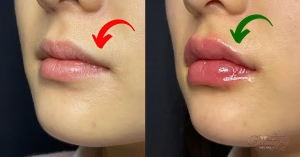
Introduction: In the realm of transportation and logistics, safety is paramount. Whether you’re a seasoned truck driver, a bus operator, or a commercial driver of any sort, ensuring your physical well-being is not just important—it’s mandatory. This is where DOT physicals come into play. In this comprehensive guide, we’ll delve into what DOT physicals entail, why they’re essential, and what you need to know before scheduling yours.
What are DOT Physicals? DOT physicals, or Department of Transportation physical examinations, are medical assessments mandated by the Federal Motor Carrier Safety Administration (FMCSA) for individuals holding commercial driver’s licenses (CDLs) and operating commercial motor vehicles (CMVs). These examinations are designed to assess a driver’s physical and mental fitness to safely operate a vehicle on the roads.
Who Needs DOT Physicals? If you drive a vehicle that requires a CDL, you’re likely required to undergo a DOT physical. This includes truck drivers, bus drivers, delivery drivers, and more. Additionally, individuals applying for a first-time CDL or renewing their existing CDL are typically required to undergo a DOT physical.
Why are DOT Physicals Important? The importance of DOT physicals cannot be overstated. These examinations serve several crucial purposes:
- Ensuring Safety: By assessing drivers’ physical and mental health, DOT physicals help ensure that only fit individuals are behind the wheel of commercial vehicles, thereby reducing the risk of accidents caused by health-related issues.
- Compliance: DOT physicals are a legal requirement for CDL holders. Failing to undergo a required physical or failing to meet the established medical standards can result in the suspension or revocation of a driver’s CDL.
- Health Monitoring: Regular DOT physicals allow for the monitoring of drivers’ health over time. This can help identify potential health concerns early on, allowing for appropriate interventions and ensuring continued safe operation on the roads.
What to Expect During a DOT Physical: During a DOT physical, a certified medical examiner will assess various aspects of your health, including:
- Vision: You must have at least 20/40 vision in each eye, with or without correction, and a field of vision of at least 70 degrees in horizontal meridian.
- Hearing: You must be able to perceive a forced whisper at a distance of at least 5 feet without the use of a hearing aid.
- Blood Pressure: Your blood pressure must be below 140/90 to qualify for a two-year certification.
- General Health: The examiner will assess your overall health, including your cardiovascular, respiratory, and musculoskeletal systems.
Preparing for Your DOT Physical: To ensure a smooth DOT physical experience, consider the following tips:
- Bring Required Documentation: Bring your driver’s license, any corrective lenses or hearing aids you use, and a list of any medications you’re currently taking.
- Be Well-Rested: Get a good night’s sleep before your appointment to ensure you’re alert and well-rested during the examination.
- Stay Hydrated: Drink plenty of water leading up to your appointment to ensure accurate urine sample results.
Conclusion: DOT physicals are a critical aspect of ensuring safety on the roads and compliance with federal regulations for commercial drivers. By understanding what DOT physicals entail, who needs them, and how to prepare for them, drivers can navigate this requirement with ease, ensuring they remain fit to safely operate commercial vehicles while maintaining compliance with regulatory standards. So, if you’re due for your DOT physical, don’t delay—schedule your appointment today and prioritize your safety and the safety of others on the road.






















